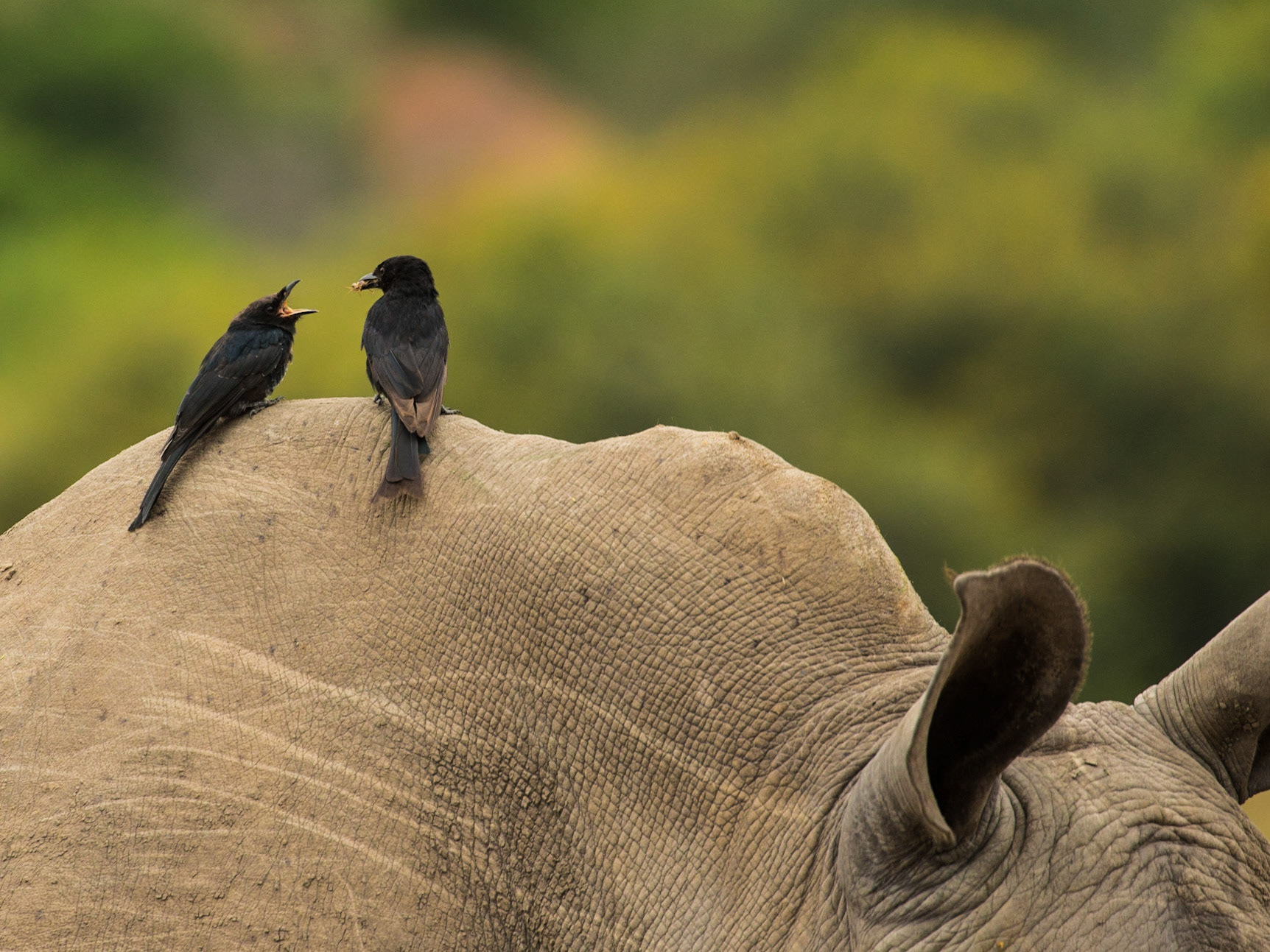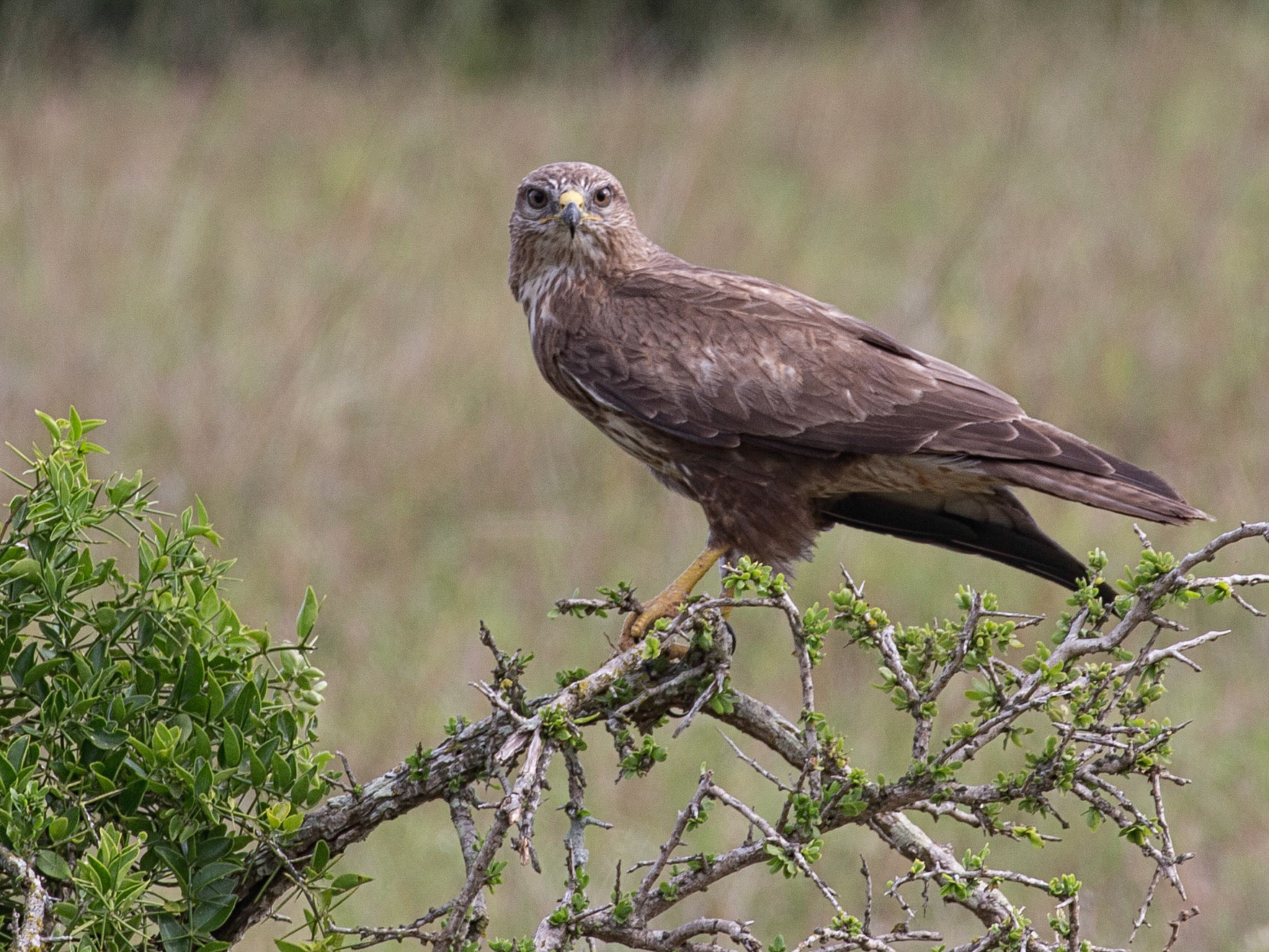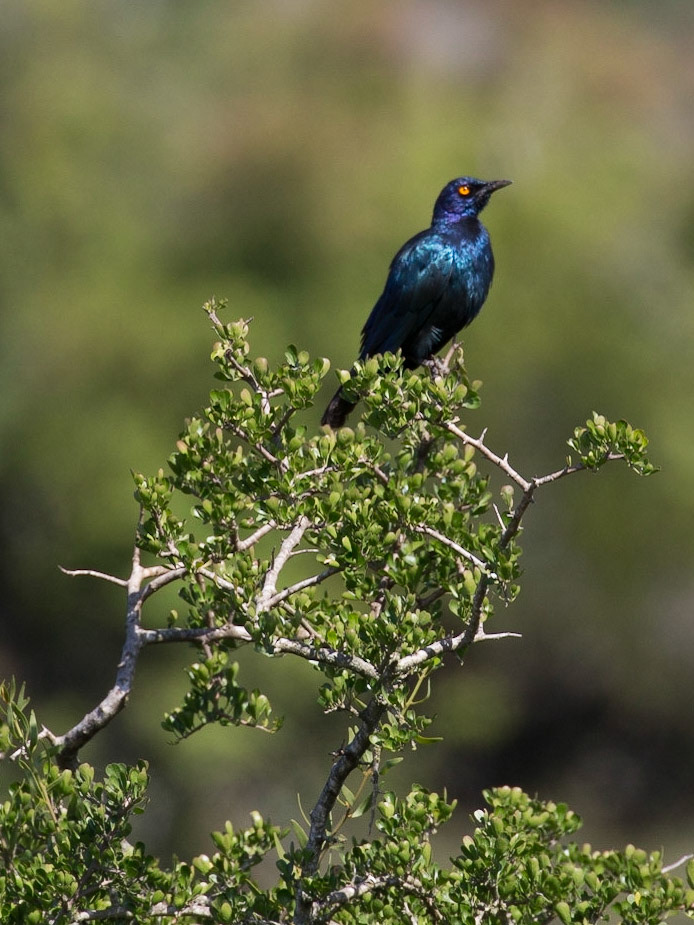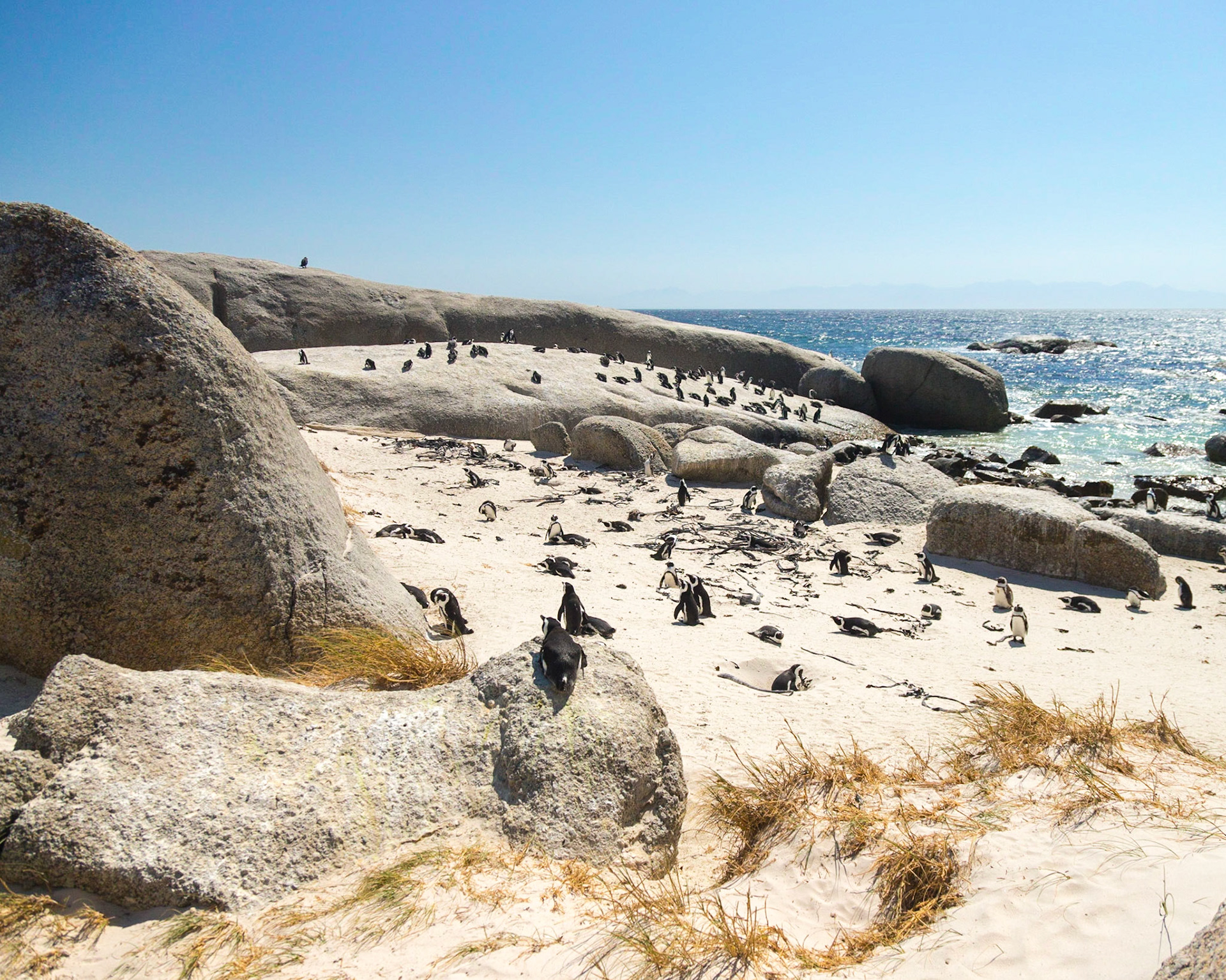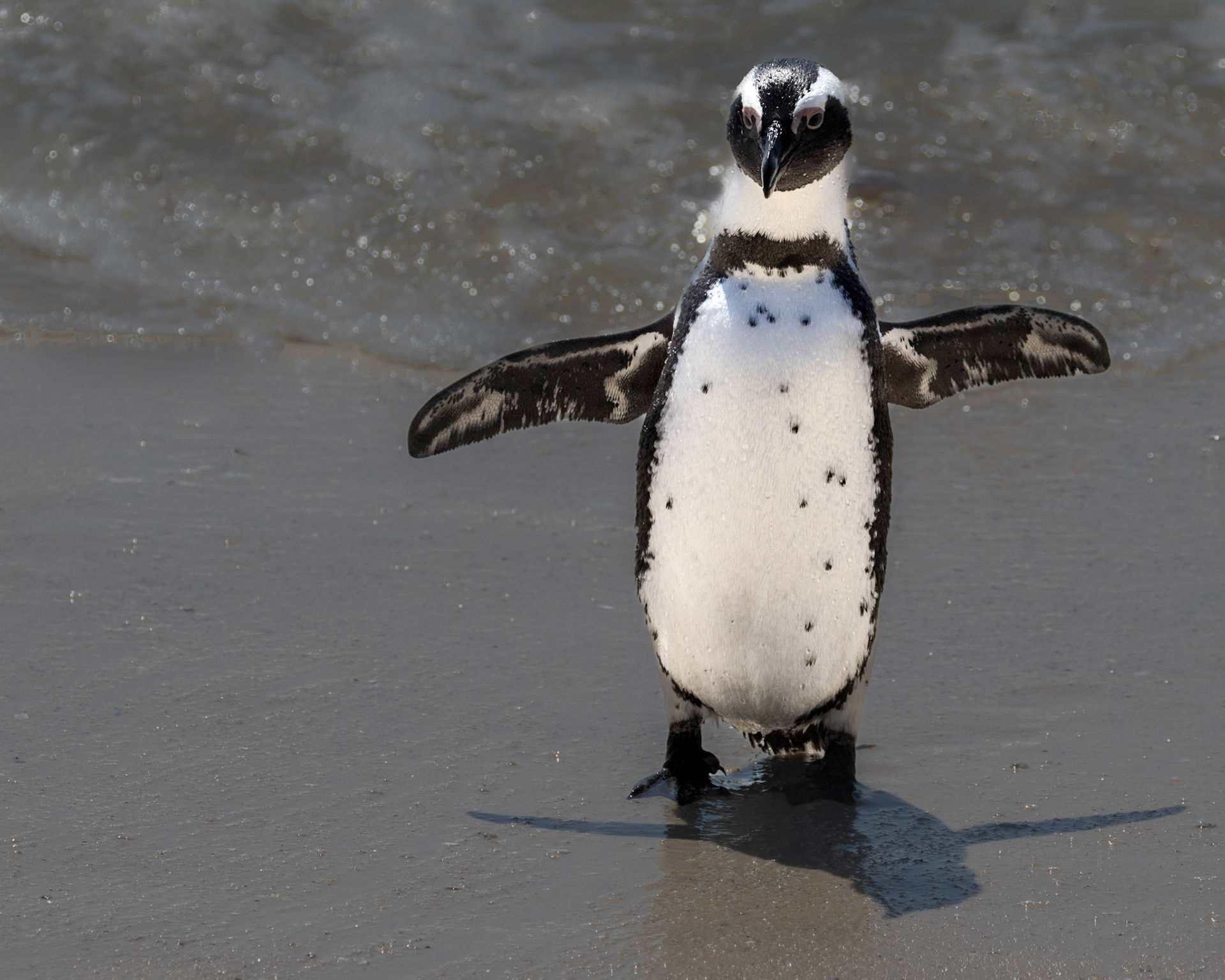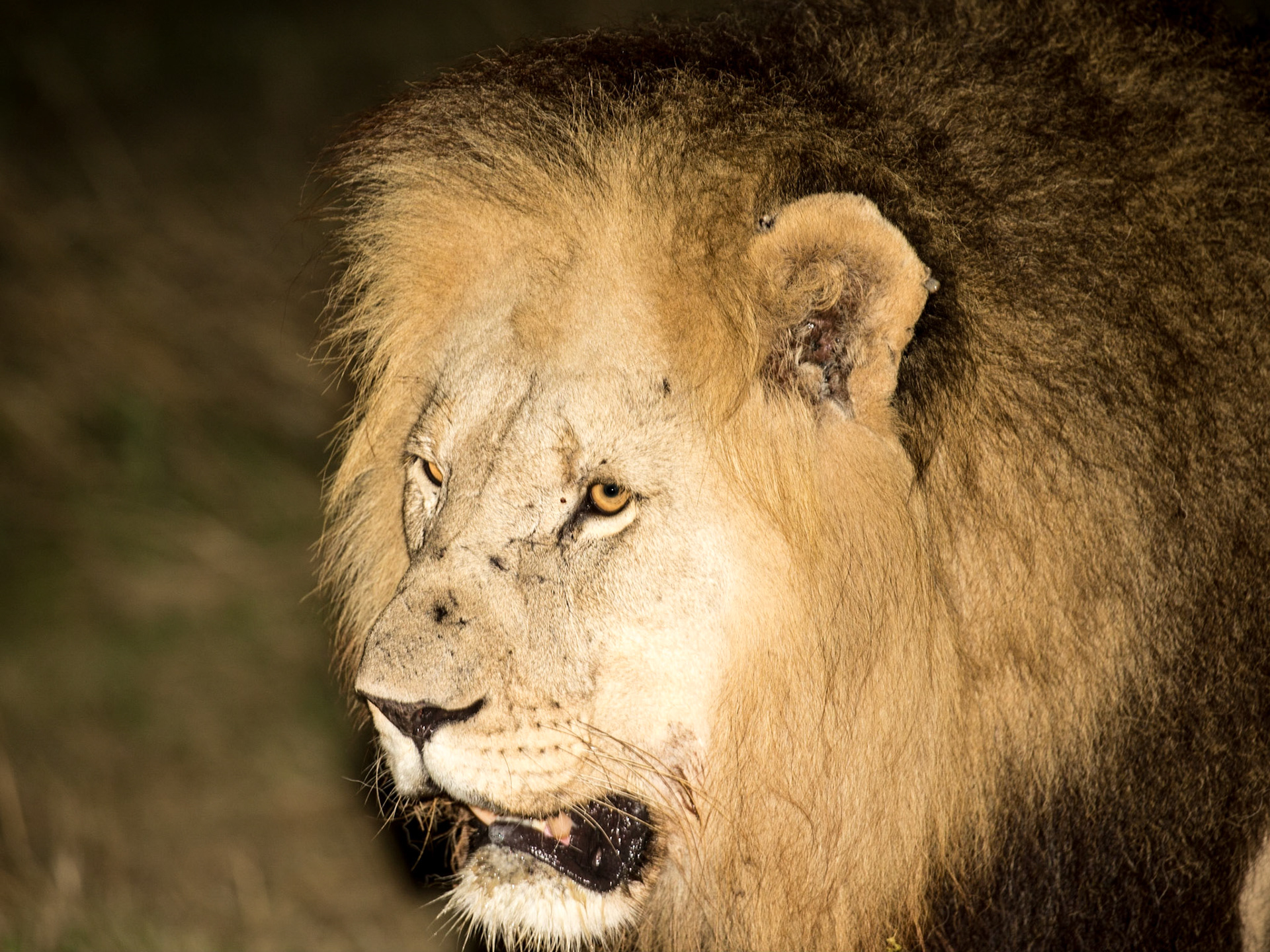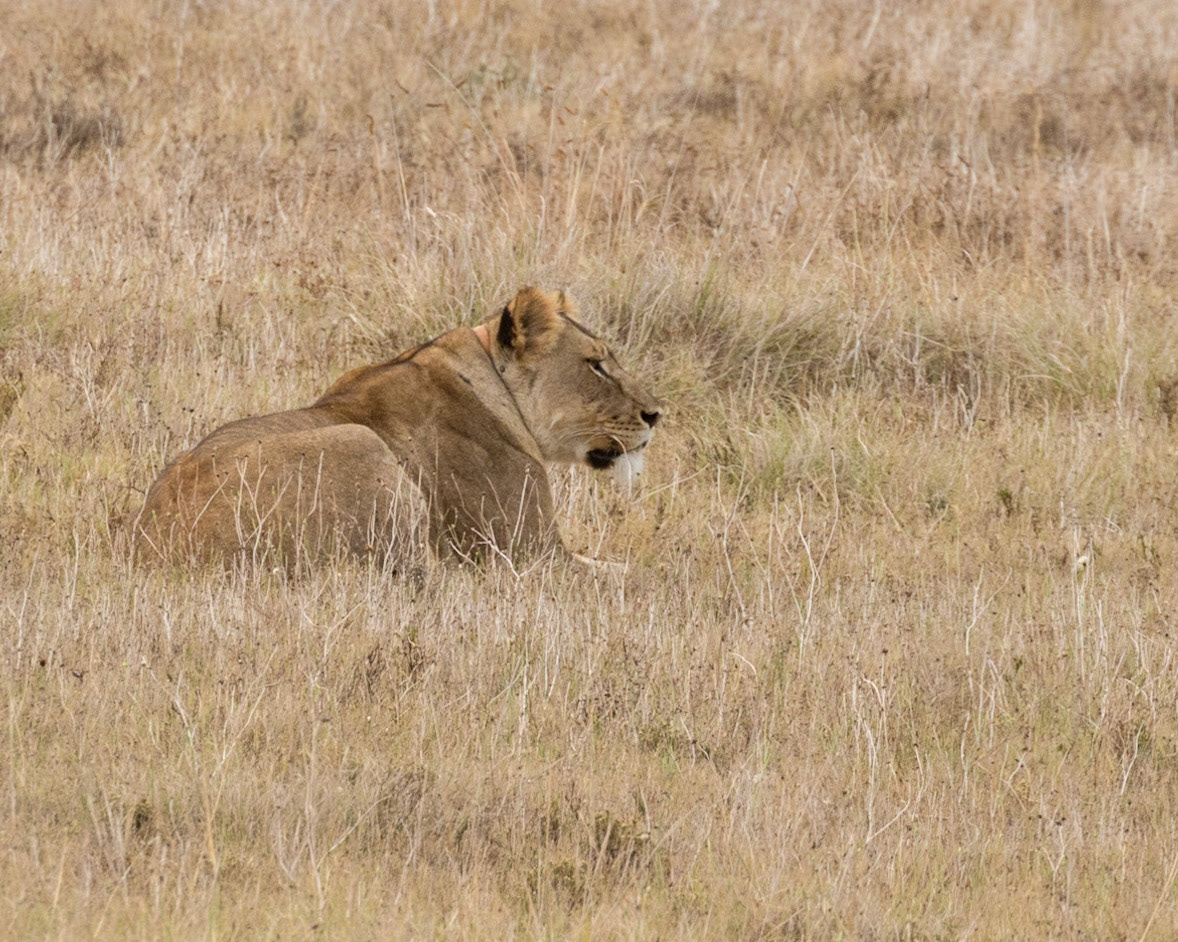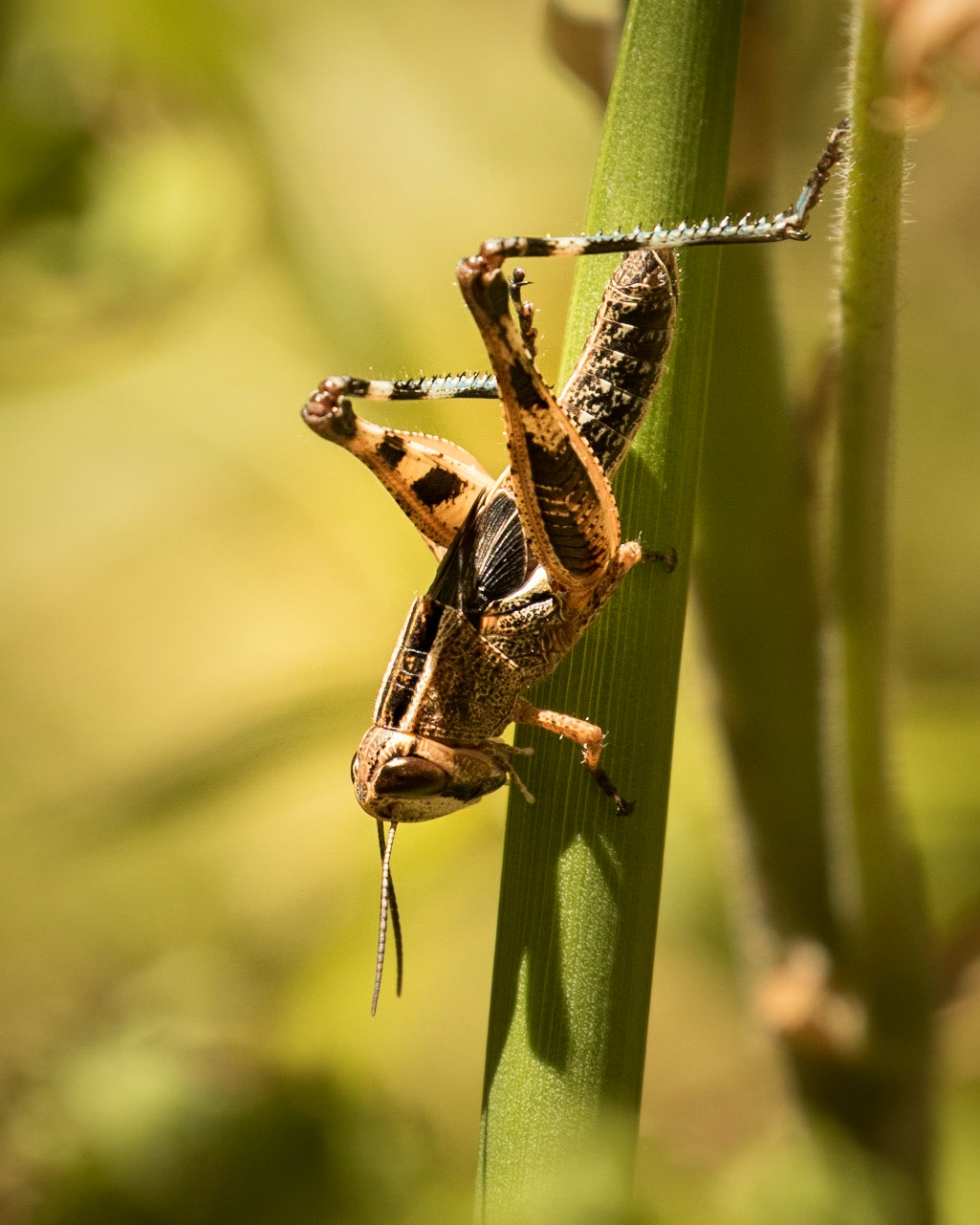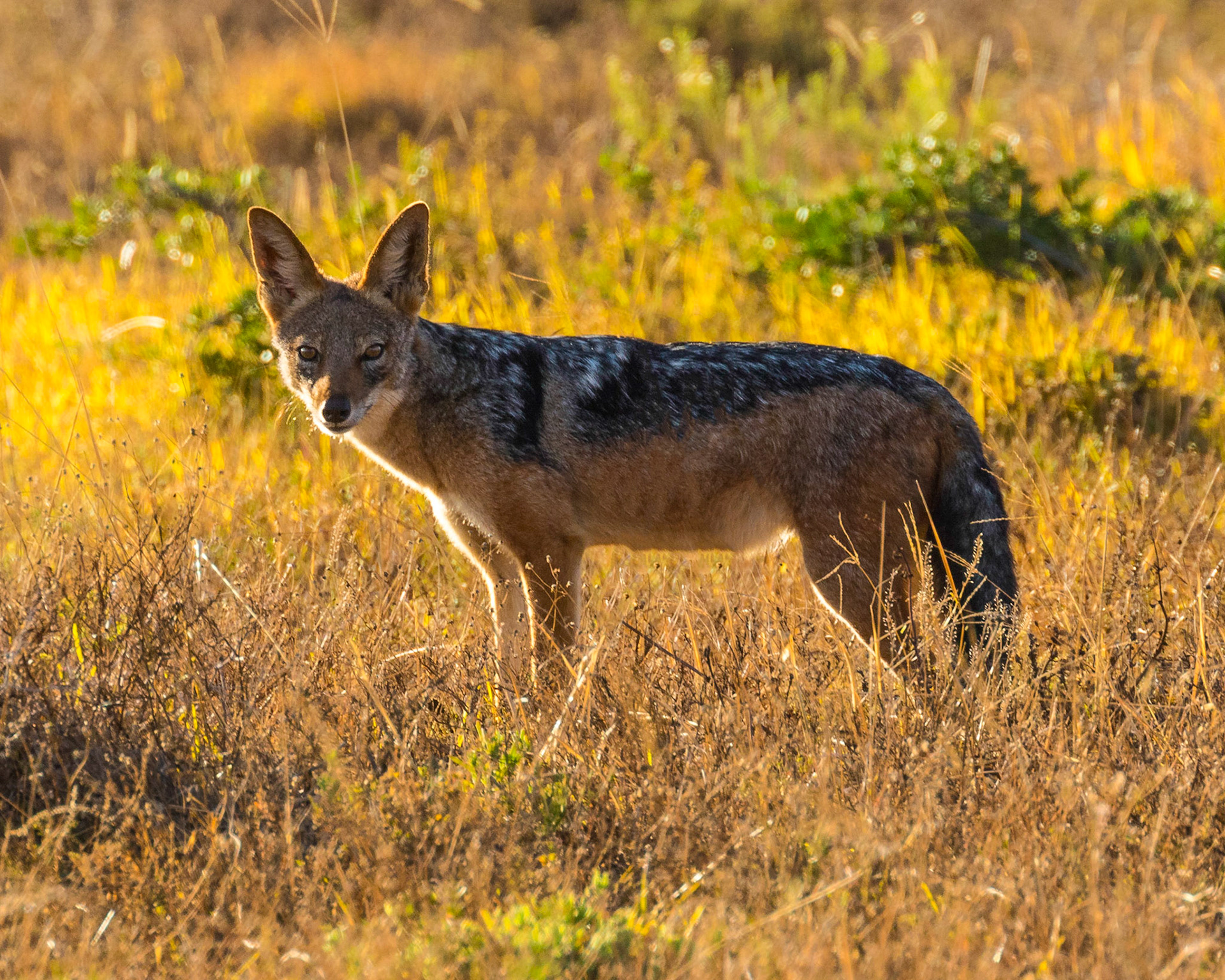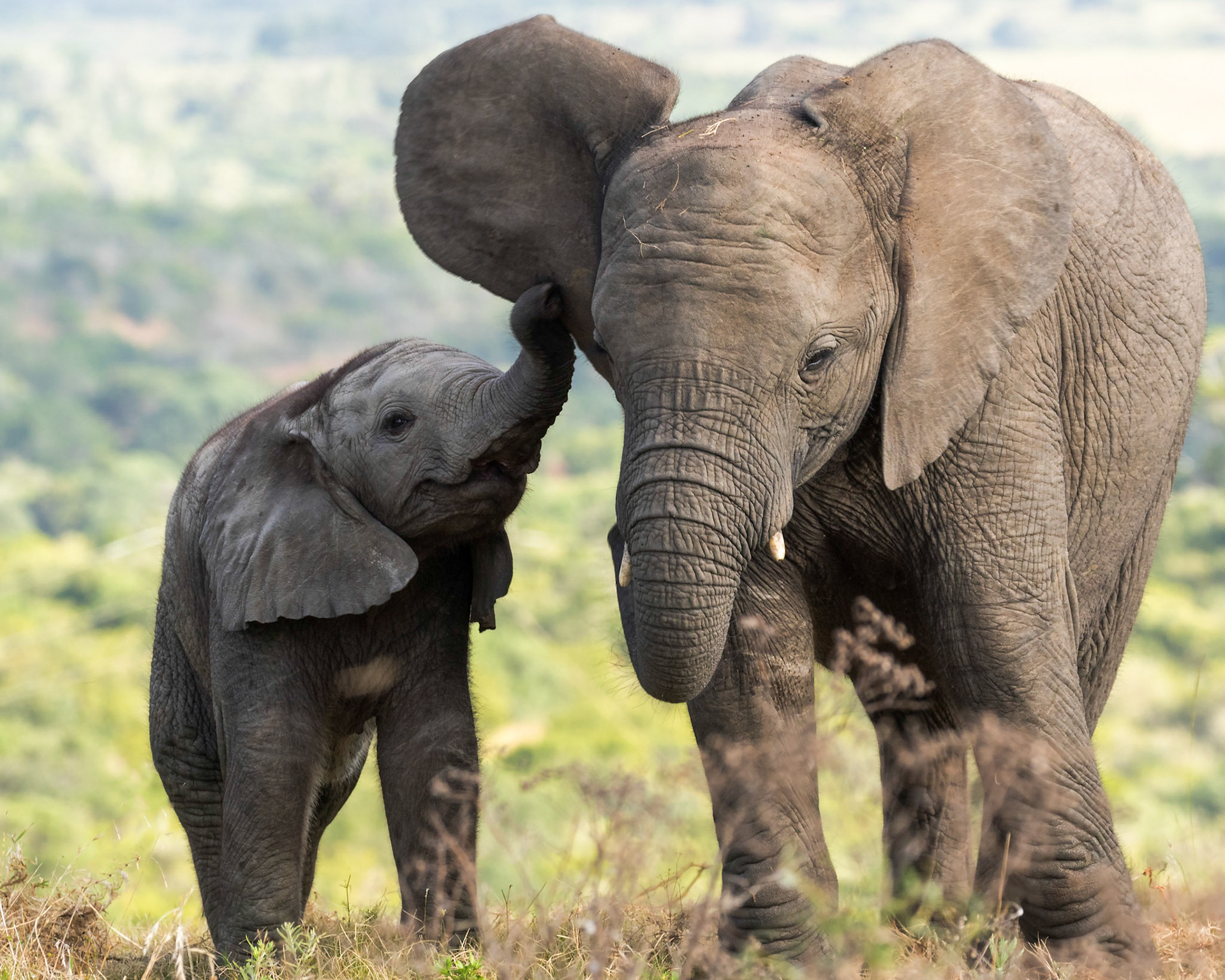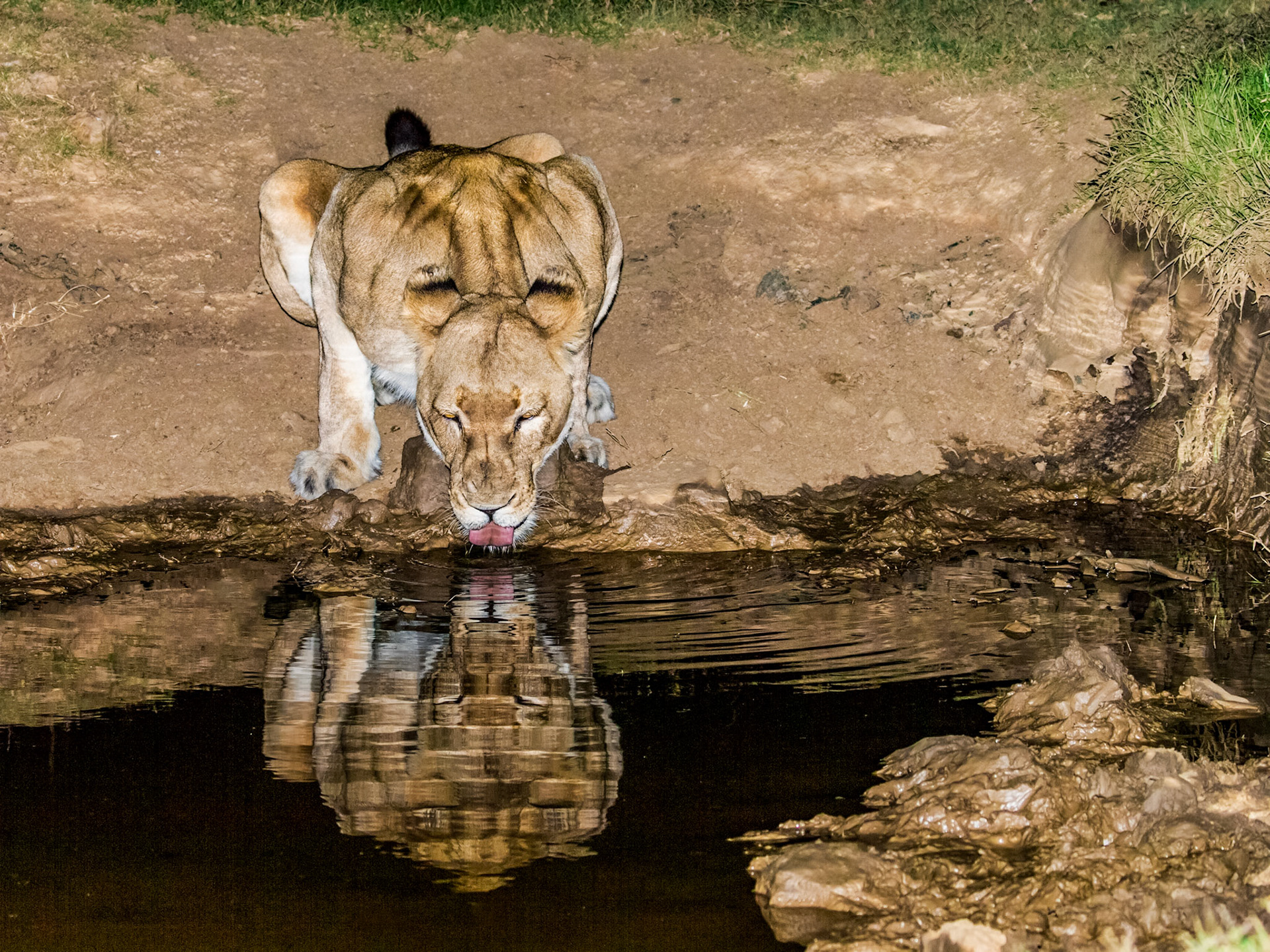
Feeding Time For The Fork Tailed Drongo

The Rufous Naped Lark Singing

The Cape Rock Thrush

The Steppe Buzzard On The Lookout

The African Darter

The Blacksmith Lapwing

The Cape Glossy Starling

A Flock Of African Sacred Ibis

The Fork Tailed Drongo On A Drimia Maritima Plant

The Crowned Hornbill (Tockus alboterminatus) is a medium-sized bird, 50–54 centimetres (20–21 in) in length, and is characterized by its white belly and black back and wings. The tips of the long tail feathers are white. The eyes are yellow; the beak is red and presents a stocky casque on the upper mandible. In females, the casque is smaller.

The Forest Buzzard

African Sacred Ibis In Flight

Its common name is popularly thought to derive from the crest of long quill-like feathers, lending the bird the appearance of a secretary with quill pens tucked behind their ear, as was once common practice. A more recent hypothesis is that "secretary" is borrowed from a French corruption of the Arabic saqr-et-tair or "hunter-bird." It appears on the coats of arms of Sudan and South Africa.

The Fiscal Flycatcher

African Sacred Ibis

The Malachite Kingfisher

The Rufous Naped Lark

Boulders Beach is located a few kilometres to the south of Simon's Town, in the direction of Miller's Point. Here small coves with white sandy beaches and calm shallow water are interspersed between boulders of Cape granite. There has been a colony of African penguins at Boulders Beach since 1985. The African penguin (Spheniscus demersus), also known as the jackass penguin and black-footed penguin is a species of penguin, confined to southern African waters.

Boulders Beach is located a few kilometres to the south of Simon's Town, in the direction of Miller's Point. Here small coves with white sandy beaches and calm shallow water are interspersed between boulders of Cape granite. There has been a colony of African penguins at Boulders Beach since 1985. The African penguin (Spheniscus demersus), also known as the jackass penguin and black-footed penguin is a species of penguin, confined to southern African waters.

Boulders Beach is located a few kilometres to the south of Simon's Town, in the direction of Miller's Point. Here small coves with white sandy beaches and calm shallow water are interspersed between boulders of Cape granite. There has been a colony of African penguins at Boulders Beach since 1985. The African penguin (Spheniscus demersus), also known as the jackass penguin and black-footed penguin is a species of penguin, confined to southern African waters.

Boulders Beach is located a few kilometres to the south of Simon's Town, in the direction of Miller's Point. Here small coves with white sandy beaches and calm shallow water are interspersed between boulders of Cape granite. There has been a colony of African penguins at Boulders Beach since 1985. The African penguin (Spheniscus demersus), also known as the jackass penguin and black-footed penguin is a species of penguin, confined to southern African waters.

Boulders Beach is located a few kilometres to the south of Simon's Town, in the direction of Miller's Point. Here small coves with white sandy beaches and calm shallow water are interspersed between boulders of Cape granite. There has been a colony of African penguins at Boulders Beach since 1985. The African penguin (Spheniscus demersus), also known as the jackass penguin and black-footed penguin is a species of penguin, confined to southern African waters.

Boulders Beach is located a few kilometres to the south of Simon's Town, in the direction of Miller's Point. Here small coves with white sandy beaches and calm shallow water are interspersed between boulders of Cape granite. There has been a colony of African penguins at Boulders Beach since 1985. The African penguin (Spheniscus demersus), also known as the jackass penguin and black-footed penguin is a species of penguin, confined to southern African waters.

Boulders Beach is located a few kilometres to the south of Simon's Town, in the direction of Miller's Point. Here small coves with white sandy beaches and calm shallow water are interspersed between boulders of Cape granite. There has been a colony of African penguins at Boulders Beach since 1985. The African penguin (Spheniscus demersus), also known as the jackass penguin and black-footed penguin is a species of penguin, confined to southern African waters.

Boulders Beach is located a few kilometres to the south of Simon's Town, in the direction of Miller's Point. Here small coves with white sandy beaches and calm shallow water are interspersed between boulders of Cape granite. There has been a colony of African penguins at Boulders Beach since 1985. The African penguin (Spheniscus demersus), also known as the jackass penguin and black-footed penguin is a species of penguin, confined to southern African waters.

The African oystercatcher is a large, noisy wader, with completely black plumage, red legs and a strong broad red bill. The sexes are similar in appearance, however, females are larger and have a slightly longer beak than males. The nest is a bare scrape on pebbles, sand or shingle within about 30 metres (98 ft) of the high-water mark. On rock ledges there may be a rim of shells to keep the eggs in place. The female generally lays two eggs, but there may be one or three, which are incubated by both adults. The incubation period varies between 27 and 39 days and the young take a further 38 or so days to fledge.

The African oystercatcher is a large, noisy wader, with completely black plumage, red legs and a strong broad red bill. The sexes are similar in appearance, however, females are larger and have a slightly longer beak than males. Juveniles have soft grey plumage and do not express the characteristic red legs and beak until after they fledged. The call is a distinctive loud piping, very similar to Eurasian oystercatchers. As the Eurasian oystercatcher is a migratory species they only occur as a vagrant in southern Africa, and its black-and-white plumage makes confusion impossible.

The Victoria & Alfred Waterfront, neighbouring the Table Bay harbour is almost as synonymous with a visit to Cape Town, as the Table Mountain that looks upon it from up high. Developed from redundant docklands, this vast property now blends seamlessly and attractively with the working harbour. Cape Fur Seals would ordinarily shack up on off shore islands, but these fluffy sea creatures obviously have impeccable taste, as they’ve made the Waterfront their home. They can be found inside old tires lining the quayside.

Cape Fur Seals would ordinarily shack up on off shore islands, but these fluffy sea creatures obviously have impeccable taste, as they’ve made the Victoria and Alfred Waterfront their home. They can be found inside old tyres lining the quayside.

The Victoria & Alfred Waterfront, neighbouring the Table Bay harbour is almost as synonymous with a visit to Cape Town, as the Table Mountain that looks upon it from up high. Developed from redundant docklands, this vast property now blends seamlessly and attractively with the working harbour. Cape Fur Seals would ordinarily shack up on off shore islands, but these fluffy sea creatures obviously have impeccable taste, as they’ve made the Waterfront their home. They can be found inside old tires lining the quayside.

The brown fur seal (Arctocephalus pusillus), also known as the Cape fur seal, South African fur seal and the Australian fur seal

The common hippopotamus (Hippopotamus amphibius), or hippo, is a large, mostly herbivorous mammal in sub-Saharan Africa. Hippos are also very aggressive towards humans, whom they sometimes attack whether in boats or on land, commonly with no apparent provocation, and are widely considered to be one of the most dangerous large animals in Africa.

Female African Elephant With Her Calf

Zebra Panorama In Monochrome

Rhinocerous

Cheetah Resing After An Unsuccesful Chase

This sometimes abundant species has been known to swarm and to migrate short distances to mass breeding grounds. It has become destructive to crops and pastureland at times, mostly where natural habitats have been converted to agricultural purposes. However, its numbers are normally too small to cause significant damage.

The Long Trail For Water

The black-backed jackal (Canis mesomelas)

Zebra Portrait

The malachite kingfisher (Corythornis cristatus) is a river kingfisher which is widely distributed in Africa south of the Sahara. It is largely resident except for seasonal climate-related movements. This species is common to reeds and aquatic vegetation near slow-moving water or ponds. The flight of the malachite kingfisher is rapid, with the short, rounded wings whirring until they appear a mere blur. The bird has regular perches or stands from which it fishes. These are usually low over the water. It sits upright, its tail pointed downwards. It drops suddenly with a splash and usually returns at once with a struggling captive.


A most disturbing trend has been the horrific increase in poaching of rhinos in South Africa. Prior to 2006, illegal killing of rhinos was being maintained at consistently low levels. Since 2008, rhino poaching in South Africa has skyrocketed year on year, culminating in a total of 448 rhinos killed in 2011. The face of rhino poaching has also changed, with trusted wildlife industry professionals adding to the ranks of the more traditional poaching demographic. Unfortunately, there is no indication that the rhino poaching crisis is coming under control, as rhino deaths continue apace despite the government responses to combat poaching, including the deployment of Army personnel along the border between Kruger National Park and Mozambique. South African citizens and private owners of rhinos are also developing a range of increasingly innovative approaches to make rhinos less attractive to poachers, such as dehorning.



The blue dasher (Pachydiplax longipennis) is a dragonfly of the skimmer family. They will eat just about anything, but their favourite meals are mosquito larvae. The meals change when they hatch into adults, but their insatiable appetite does not.

Mother And Juvenile Elephant

Playful Elephant Calf Annoying His Older Brother

The lion (Panthera leo) is one of the big cats in the genus Panthera and a member of the family Felidae. Highly distinctive, the male lion is easily recognised by its mane, and its face is one of the most widely recognised animal symbols in human culture. The commonly used term African lion collectively denotes the several subspecies in Africa. With some males exceeding 250 kg (550 lb) in weight, it is the second-largest living cat after the tiger. Wild lions currently exist in sub-Saharan Africa and in India. While lions do not typically hunt humans, some have. Sleeping mainly during the day, lions are active primarily at night (nocturnal), although sometimes at twilight (crepuscular)

Male Lion Prowling At Night

Lioness Drinking At The Waterhole After Dark
